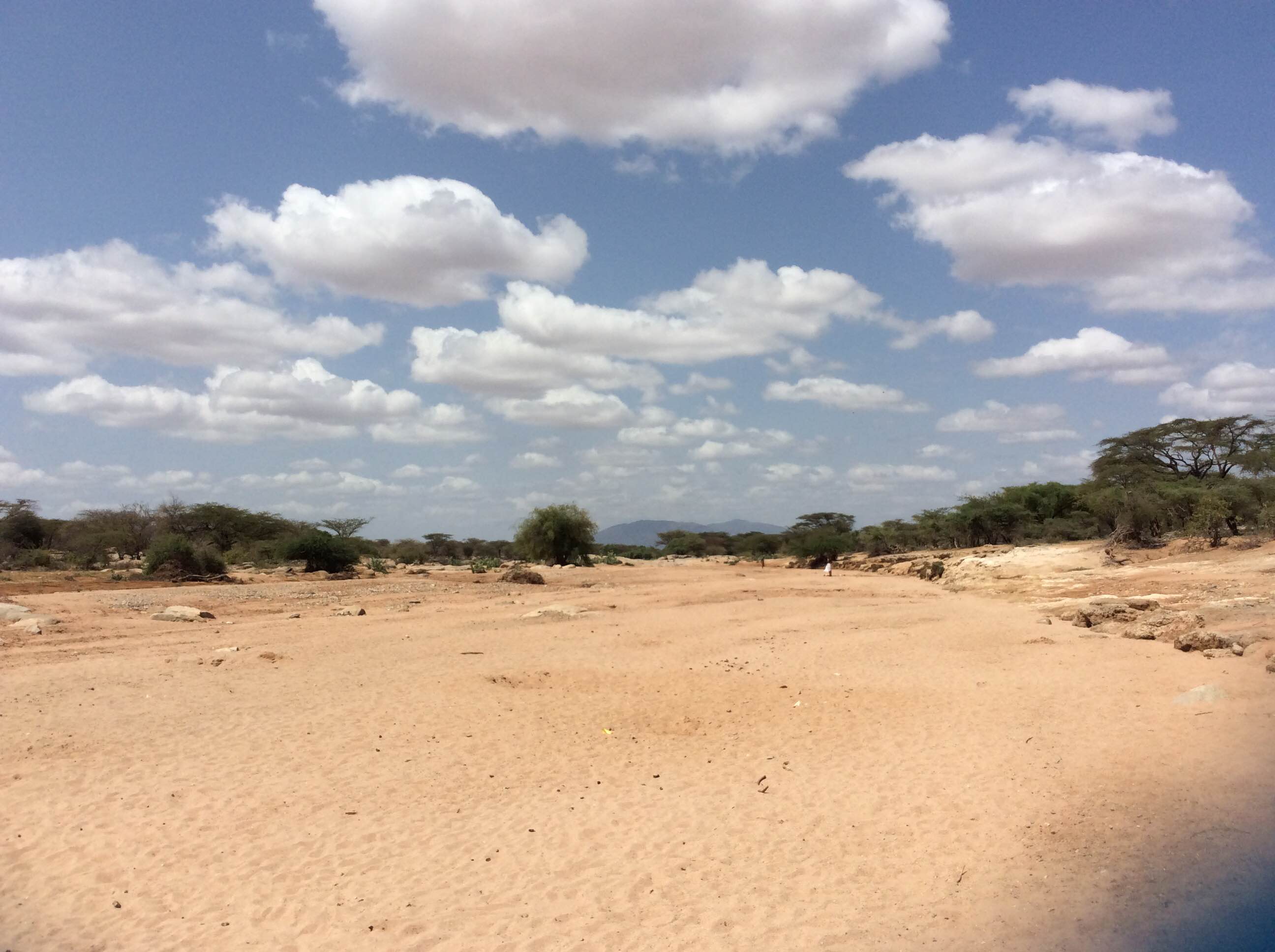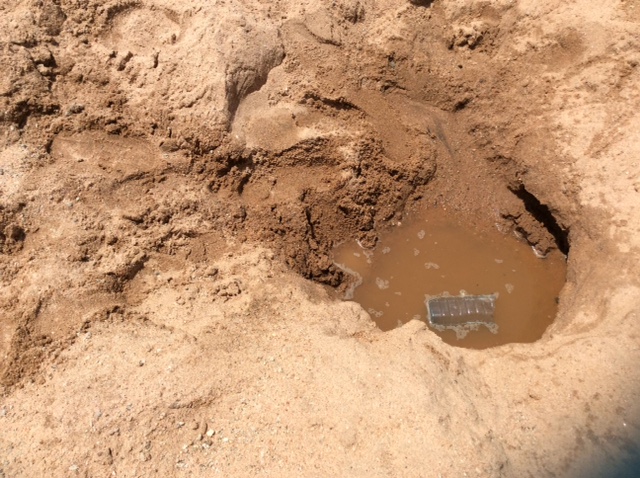
East Africa IRES #5: The river that doesn’t flow
Blog Post by Holly Cox, 2015-16 EA-IRES Fellow
June 15, 2016
 After visiting a few homesteads (called “manyattas” in the Samburu language) during our first week of field research in Samburu County, Kenya, I have begun seeing patterns and similarities in water resource locations and management from my interviews with the women. Generally, the women have two options for water retrieval in the places that we have visited so far: a local borehole well, or the “River”. Walking to a flowing river to retrieve water is not what they mean, however. A dry, empty basin that holds water during the rainy season and severe rain or flooding is where they go, and they dig to retrieve percolated water that is held below the sand. The hotter it is outside, the deeper they dig. This process is stressful and limiting for the women. Digging deep holes in the desert heat is tough work, and the water is sometimes hot or impure in quality depending on the location in the river.
After visiting a few homesteads (called “manyattas” in the Samburu language) during our first week of field research in Samburu County, Kenya, I have begun seeing patterns and similarities in water resource locations and management from my interviews with the women. Generally, the women have two options for water retrieval in the places that we have visited so far: a local borehole well, or the “River”. Walking to a flowing river to retrieve water is not what they mean, however. A dry, empty basin that holds water during the rainy season and severe rain or flooding is where they go, and they dig to retrieve percolated water that is held below the sand. The hotter it is outside, the deeper they dig. This process is stressful and limiting for the women. Digging deep holes in the desert heat is tough work, and the water is sometimes hot or impure in quality depending on the location in the river.

The well, the second water source option, is a last resort although it is sometimes only steps away from the manyatta. The women explained to me that the water from the wells is salty, to a point of affecting their health through consumption in drinking and cooking. Problems urinating and blockage is common when consuming this water. A woman explained to me that her children will not drink the water from the well because of the strong taste and the way it makes them feel. When the dry season or drought hits, the women in some cases don’t have any other option than to use this water. I can feel the severity of the stress they feel when they explain they have absolutely no other option.
In one interview, Stacy and I went with two of the local women to the nearby well to see the environment and daily chore in action. I assisted with pumping the well for a couple minutes while the women smiled at my slight struggle to fill a Jerry can (20L) with water. One of the women took over for me and with a single hand pumped the water at a quicker pace while dancing and laughing. The ladies tied the cans together with a scarf around their heads and were on their way, with 10 L cans in hand.
The amount of water a woman and her family uses per day is dependent on her location and accessibility to water. In one interview, a woman explained to me that she uses 30 L a day for everything, a situation where the well water’s affects were so intense that she limits her intake severely. Walking long distances during the day with heavy water is not safe, so many women travel early in the morning or in the evening to retrieve. They also stated that the lines are shorter at these times and they don’t have to wait as long. Some women have told me of their fear of wildlife interaction while retrieving water. They share the same lands and river sources, and it is a risk they have no choice but to take. From elephants to hyenas to lions, wildlife attacks are a serious risk. Hearing the tribulations encountered during water retrieval, a life threatening and stressful daily task, was the toughest part of my interview process. Coming from America, and specifically Colorado which has very clean tap water, I cannot even begin to process the stress these women feel to protect themselves while providing for their families. To have access to clean, unlimited amounts of water steps away from you within your home is a blessing and shouldn’t ever be taken for granted.
For more information on CSU’s EA-IRES program and our affiliated faculty and partners, or to find an application for the 2016-17 program (due July 1, 2016!!), please visit our website at https://www.nrel.colostate.edu/projects/ires/, and please continue to follow us here on EcoPress through the summer of 2016!
See our past posts here: East Africa IRES #4,#3, #2, #1